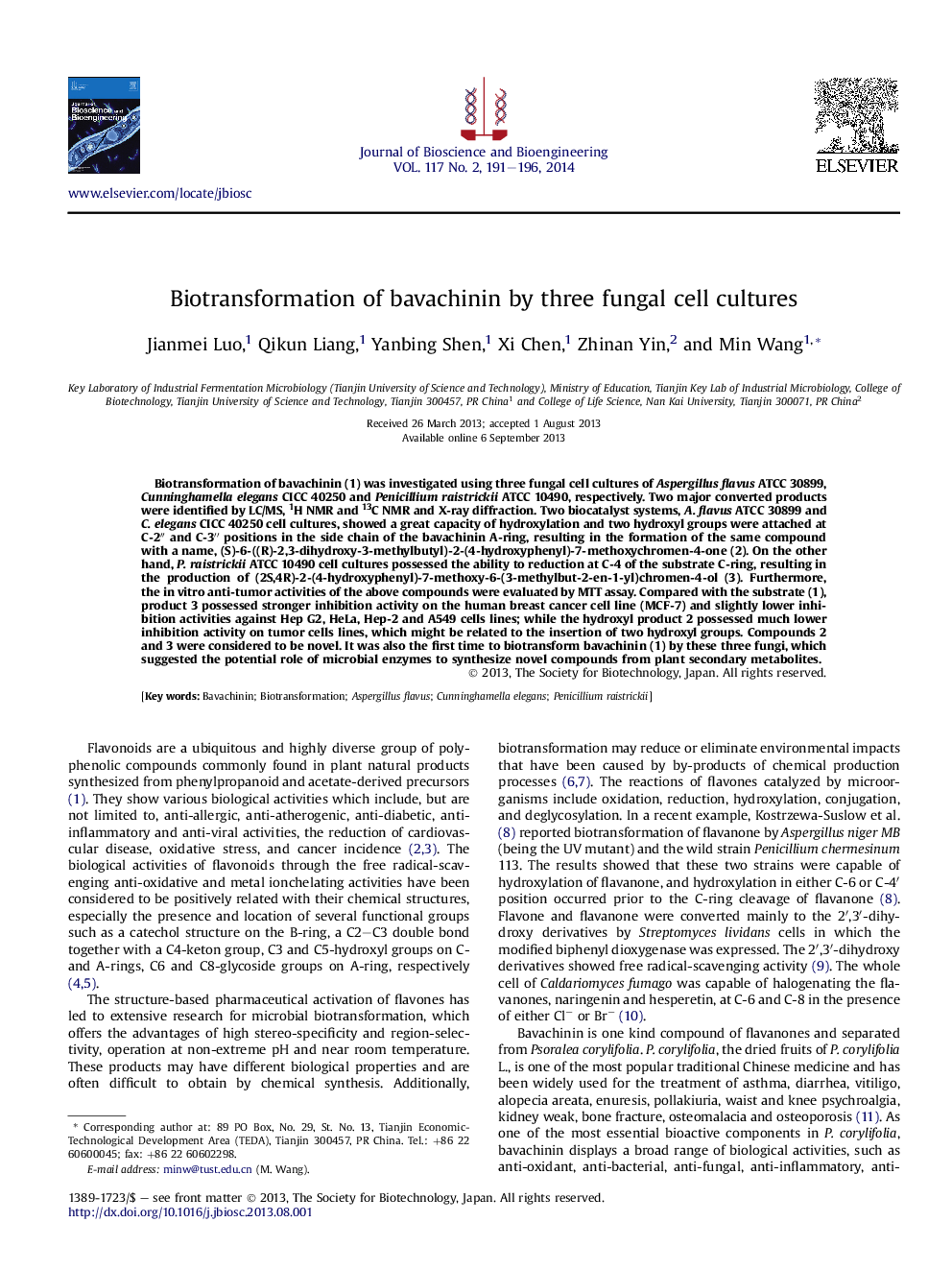| Article ID | Journal | Published Year | Pages | File Type |
|---|---|---|---|---|
| 20811 | Journal of Bioscience and Bioengineering | 2014 | 6 Pages |
Biotransformation of bavachinin (1) was investigated using three fungal cell cultures of Aspergillus flavus ATCC 30899, Cunninghamella elegans CICC 40250 and Penicillium raistrickii ATCC 10490, respectively. Two major converted products were identified by LC/MS, 1H NMR and 13C NMR and X-ray diffraction. Two biocatalyst systems, A. flavus ATCC 30899 and C. elegans CICC 40250 cell cultures, showed a great capacity of hydroxylation and two hydroxyl groups were attached at C-2″ and C-3″ positions in the side chain of the bavachinin A-ring, resulting in the formation of the same compound with a name, (S)-6-((R)-2,3-dihydroxy-3-methylbutyl)-2-(4-hydroxyphenyl)-7-methoxychromen-4-one (2). On the other hand, P. raistrickii ATCC 10490 cell cultures possessed the ability to reduction at C-4 of the substrate C-ring, resulting in the production of (2S,4R)-2-(4-hydroxyphenyl)-7-methoxy-6-(3-methylbut-2-en-1-yl)chromen-4-ol (3). Furthermore, the in vitro anti-tumor activities of the above compounds were evaluated by MTT assay. Compared with the substrate (1), product 3 possessed stronger inhibition activity on the human breast cancer cell line (MCF-7) and slightly lower inhibition activities against Hep G2, HeLa, Hep-2 and A549 cells lines; while the hydroxyl product 2 possessed much lower inhibition activity on tumor cells lines, which might be related to the insertion of two hydroxyl groups. Compounds 2 and 3 were considered to be novel. It was also the first time to biotransform bavachinin (1) by these three fungi, which suggested the potential role of microbial enzymes to synthesize novel compounds from plant secondary metabolites.
